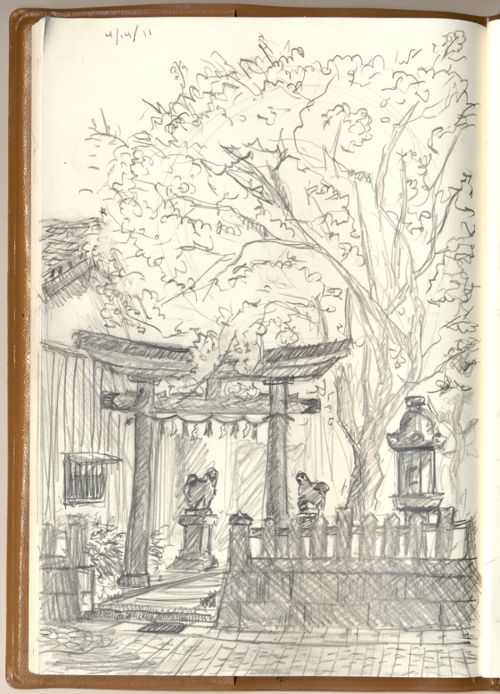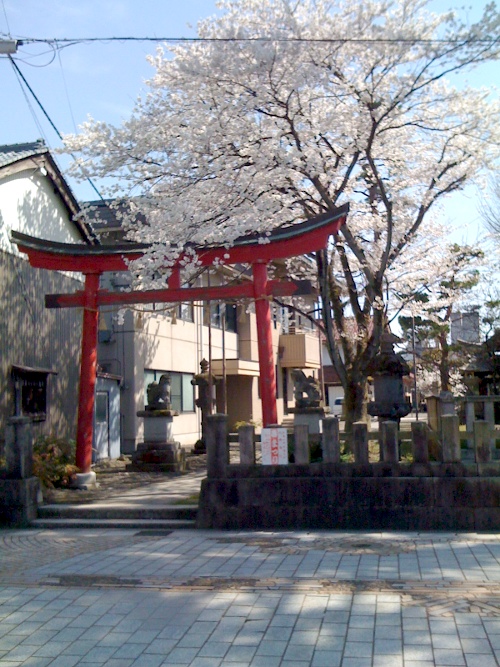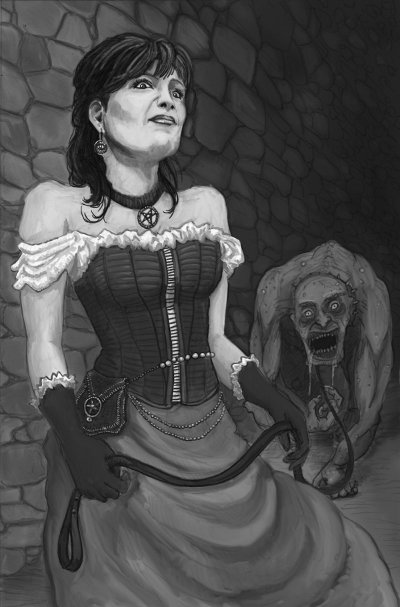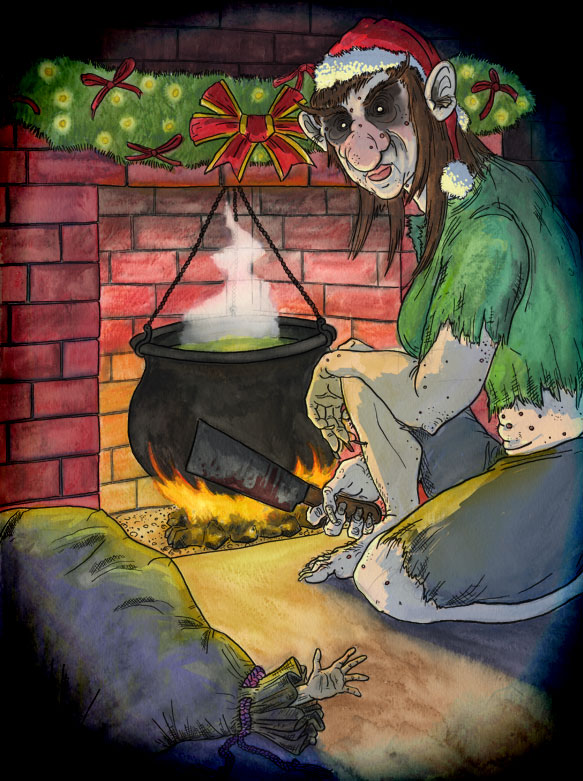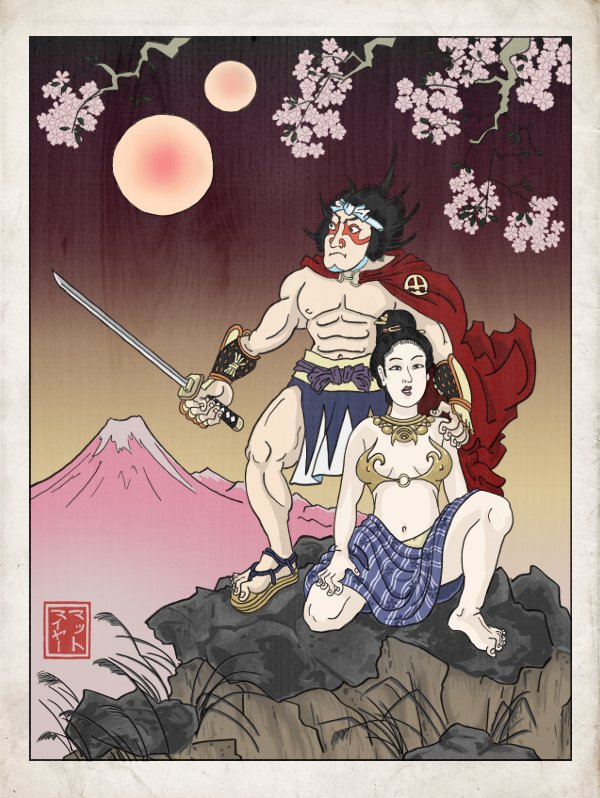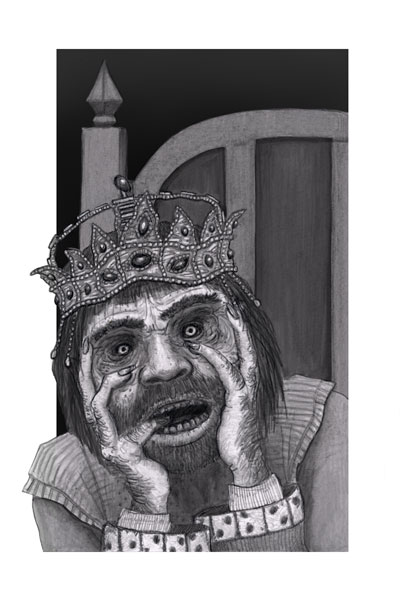Japanese houses have little alcoves, called tokonoma, where important things are usually placed. Sort of the equivalent of the mantle above a Western fireplace… but not exactly. They are usually very beautifully decorated with precious china, or katana, or vases, paintings or calligraphy. Especially at this time of year, you will find them decorated with trays of mochi topped with an orange — an New Years offering to the gods. By far the most common decoration is a kakejiku, a hanging wall scroll.
There is far too much symbology that goes into kakejiku for me to write it all here. More than simply pretty pictures, they are often representations of mythological or religious figures, nature or animal scenes, or calligraphy. There are many common themes, such as cranes, turtles, tigers, pine trees, bamboo, gods, and so on, and each one has a very specific meaning. One could spend years, I’m sure, studying the nuances of the positioning and facing of the subjects, not to mention their individual meanings. Chinese feng shui also goes into the decoration process. All of this consideration is part of the reason the tokonoma — and the kakejiku — are such striking and beautiful, uniquely Japanese, features of the house.
I had the chance to paint a kakejiku last summer, for my wife’s family. I thought very hard about what to paint, and I did a lot of research. There are thousands available at art stores to choose from, so I knew I had to do something special. I was overwhelmed by the importance of the symbology and for a while felt like I was in over my head… I was afraid of doing something wrong, or messing up a symbol, or somehow making a blunder that would render my kakejiku into something worthless and un-hangable.
Eventually, after realizing that the symbology was something I would not be able to grasp within a few short weeks of study, and that it would be nearly impossible to create anything other than a poor imitation of some other painter’s work, I decided just to do my own thing. After all, they wanted a kakejiku by me, not just any old kakejiku.
I stuck with the nature motif, and I decided to illustrate the vacation my wife and I took with her parents to Mt. Norikura — one of the first big trips I went on with her family. Norikura is a beautiful mountain right smack in the middle of the Japan alps, and it has a lot of very unique features, including a board walk through a mountaintop valley, beautiful ptarmigans (raicho, or “thunder birds,” in Japanese), and amazing mists and clouds that drift through the valleys and below the mountaintops. It was a great memory for me, and also (I hope) for them, so I thought, if anything, that should be appropriate for a Matt-made kakejiku.
They were very happy with it.
I forgot to take a picture after I painted it, and finally, after months of writing notes on my hand and subsequently forgetting to photograph it (it’s far too big to scan), I finally remembered today to take a shot and post it up here.
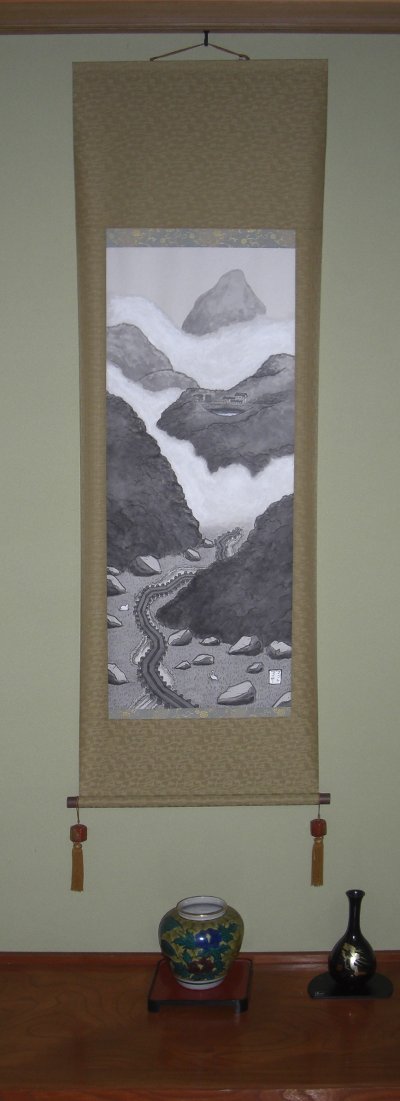
My wife's family's tokonoma
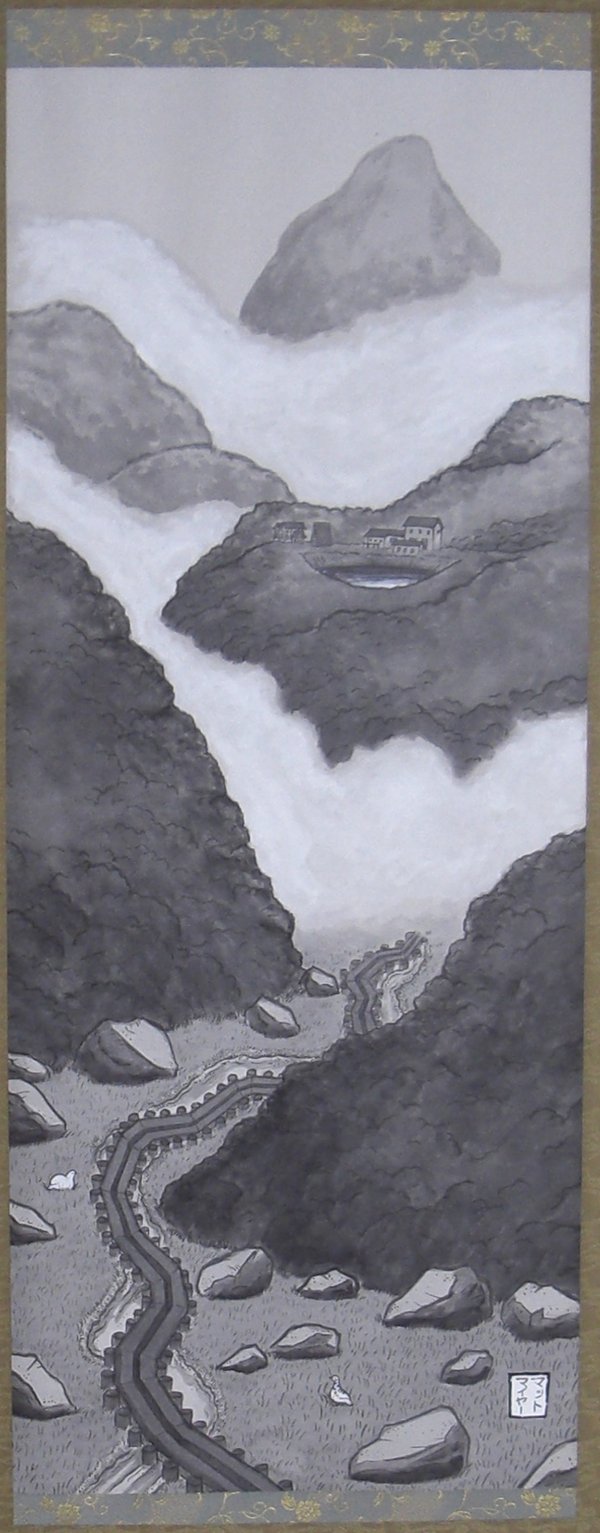
Kakejiku of Norikura -- detail
